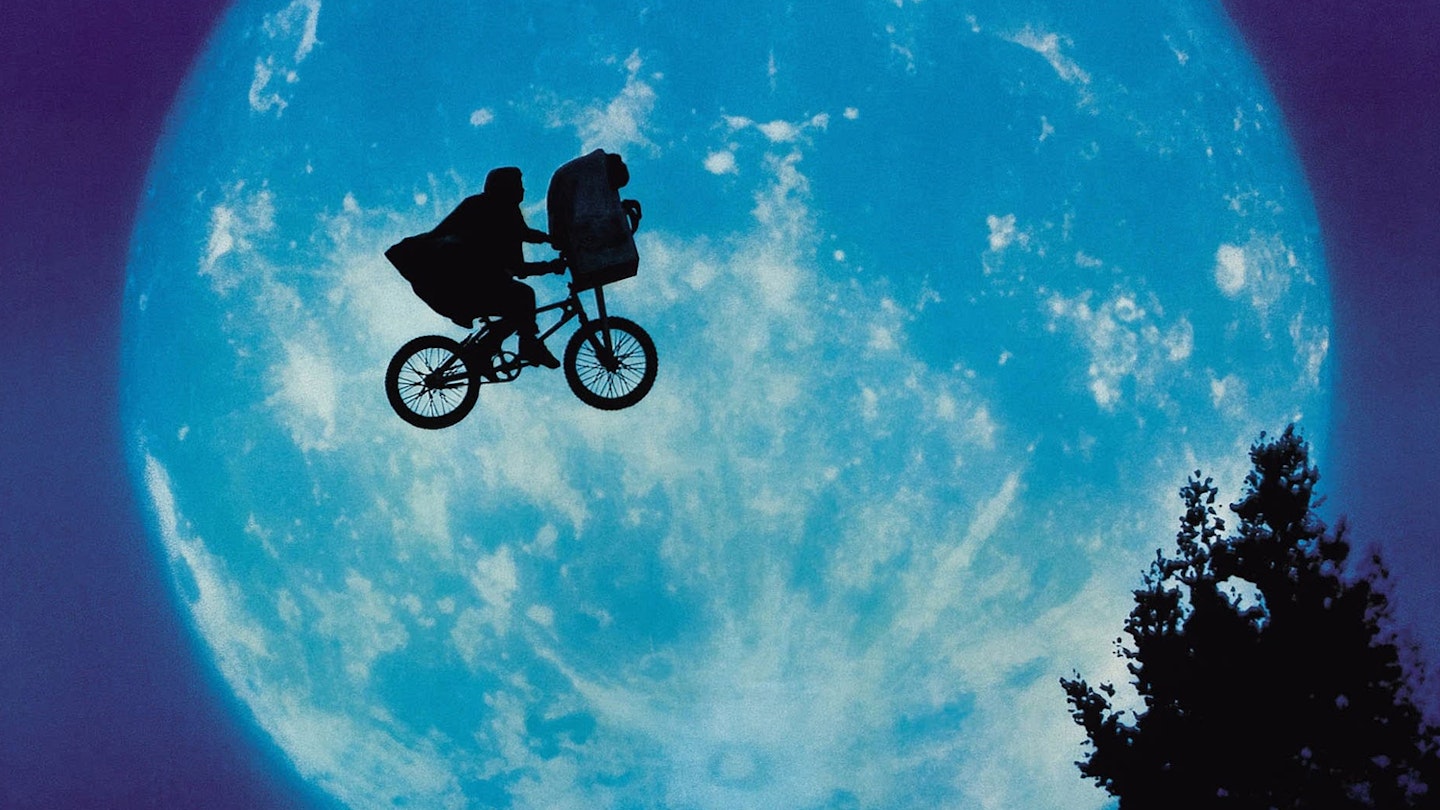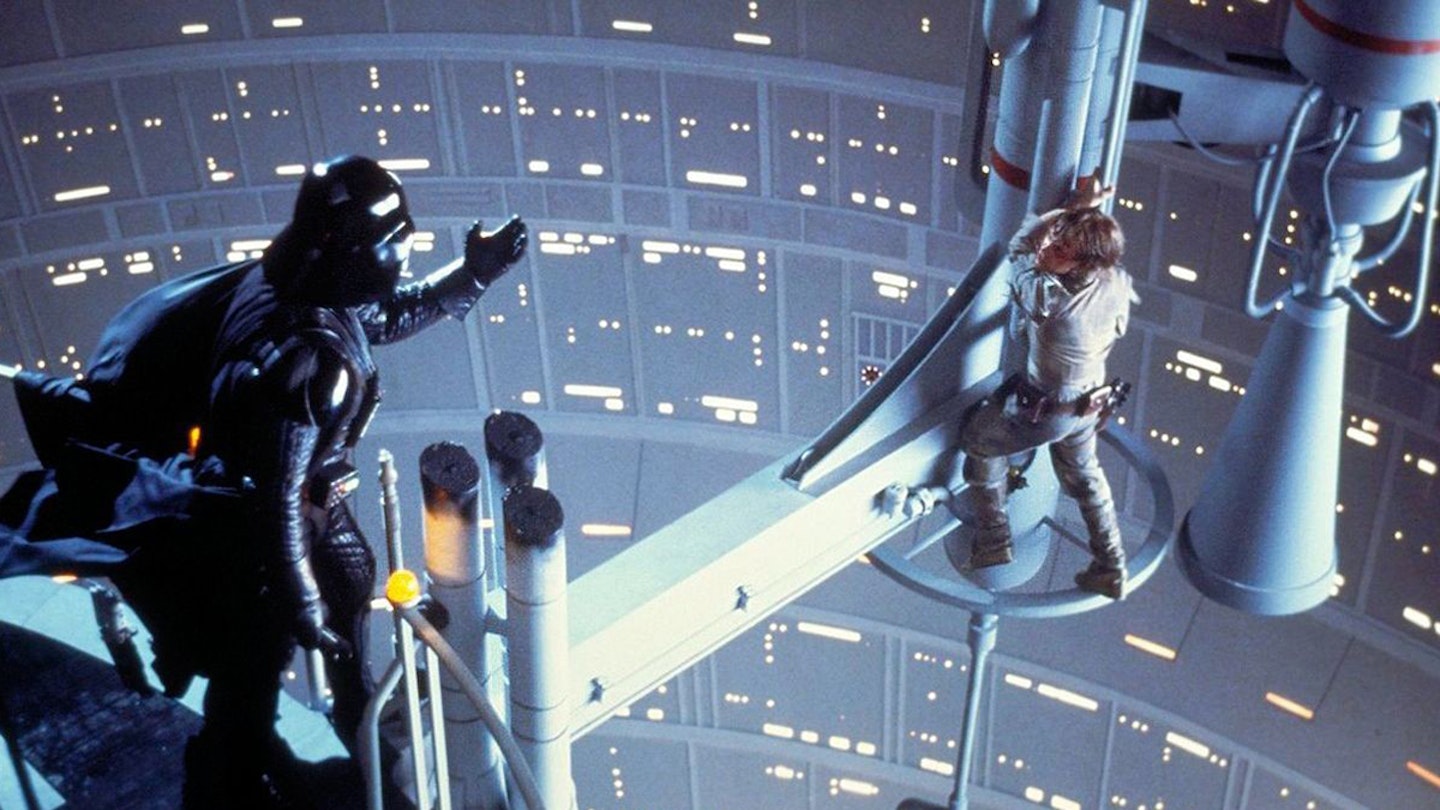If you were dismayed to see Spielberg's adorable alien hijacked by British Telecom a while back, don't worry. It would take more than a whiff of corporate sell-out to wreck this rubber-necked little fella's reputation. E.T. can still be counted among the best-loved films of all time. Furthermore, it's the third highest grosser in history (bettered only by Titanic and Star Wars).
Its incomparable sense of wonder has survived the decades intact — few films this side of Casablanca can match it for sheer lump-in-the-throat clout — and if you've got any complaints about the special effects, cast your eye over Jar Jar Binks one more time and praise the Lord that CGI wasn't around in 1982.
That said, on the drawing board at least, E.T. looked a very unlikely cuddle-bunny. Apparently, Spielberg designed the creature's face by taking a picture of a baby and superimposing Albert Einstein's eyes and forehead over the top. Hats off to designer Carlo Rambaldi then who, at the then monumental cost of $1.5m, breathed life into the animatronic urchin, creating a highly expressive, sympathetic character in spite of the primitive resources at his disposal. The film's less mechanical eye-candy was whipped up at Industrial Light And Magic under the supervision of FX pioneer Dennis Muren.
When asked about the visual effects at the time — particularly the famous flying bike scene — Spielberg replied: "Well, we waited for the sun to get very low, then we told the kids to go fly their bicycles across the sun. We said, 'Ride like the wind, ride like the wind.' And, wow — they flew right across." Ha ha!
Still, not everything was reliant on ILM's hi-tech smoke and mirrors. For some of the long-shots, midgets in E.T. suits stood in for Rambaldi's handiwork and in the scene where E.T. gets drunk on a six-pack of Coors, legless schoolboy (and there really is no other way of putting that) Matthew de Merrit donned the costume and staggered around on his hands. E.T.'s distinctively croaky voice was a combination of a chain-smoking ex-schoolteacher, overheard by Spielberg in a supermarket, and actress Debra Winger.
E.T. had been a project close to Spielberg's heart for many years. The success of Raiders Of The Lost Ark had propelled him to the very top of the teetering Hollywood heap, but he never felt that there was enough of him in it. His cherished alien fable could, he believed, be a far more personal film. He confided as much to Melissa Mathison, Harrison Ford's screenwriter girlfriend, during the production of Raiders.
Her response was the outline for a story — a young boy befriends a vulnerable alien who has been accidentally abandoned on Earth. Spielberg was delighted with it. So much so that he ditched a more sombre treatment of a similar story, Dark Skies, on which he was working with writer John Sayles, and switched his attention immediately to E.T. After offering the new project to Sayles, who balked at the material's sentimentality, he approached Mathison to furnish a screenplay.
It's easy to see why Spielberg was so entranced by E.T., a simple, old-fashioned fairytale with a modern, post-Close Encounters spin. Moreover, for someone who was himself a lonely, troubled child, it is the perfect wish-fulfilment fantasy — the imaginary friend who is not only real but who can perform feats of magical telekinesis and whose survival depends on the love and empathy of a child because adults are too self-absorbed, too busy, too grown up to notice him. Those that do see him only as a curiosity to be studied and experimented on.
Of the film's many strengths, the performances of the three children are outstanding. Wholly warranted praise has been heaped on Henry Thomas as Elliot, the sensitive, serious little boy whose bond with E.T. is so strong he begins to feel the alien's emotions and to suffer with him while he is dying. But Robert MacNaughton as his older brother Michael, the man of the house now their father has gone although still just a child himself, also turns in a fine performance. And, of course, seven year-old Drew Barrymore steals every scene she's in as the cherubic Gertie. She simply doesn't appear to be acting. None of them do, and it's all too rare to see child actors this miraculously unselfconscious and convincing.
E.T. has a looser, less formal directorial style than any other Spielberg movie, and the misty, diffused light which characterises almost every scene counterpoints the naturalistic dialogue and non-intrusive, almost documentary-style camera work to brilliant effect. Quite why this should evoke the essence of childhood so vividly is hard to tell. Perhaps the dream-like coalition of hazy physical boundaries — typified by the light streaming through the louvered doors of the children's' bedrooms — and an intense emotional clarity invokes the stuff of memories. One scene in particular, where E.T. watches from the toy cupboard while the children's mother reads to Barrymore from Peter Pan, is just exquisitely poignant.

